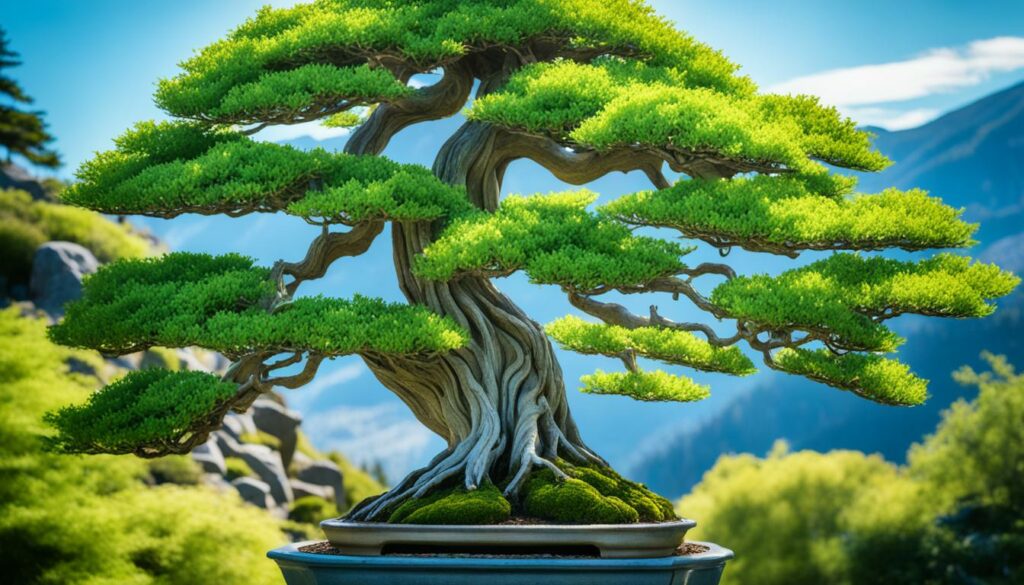If you are looking for a low-maintenance and resilient bonsai tree species, Celtis is an excellent choice. Also known as Hackberry, this deciduous bonsai is unique and offers a beautiful addition to your indoor or outdoor space.
In this section, you will learn about the characteristics of Bonsai Tree Species Celtis, why it is so popular among bonsai enthusiasts, and how to cultivate and maintain your own Celtis bonsai.
Key Takeaways
- Celtis bonsai is a deciduous bonsai tree species known for its low maintenance and unique beauty
- It is a popular choice among bonsai enthusiasts of all levels
- Cultivating and maintaining a Celtis bonsai requires specific care and attention, which we will explore in further detail
Introduction to Celtis Bonsai
If you’re looking for a beautiful and low-maintenance bonsai tree, Celtis bonsai is an excellent choice. As a deciduous bonsai, it sheds its leaves in the autumn, making it ideal for gardeners who enjoy seasonal change.
Celtis bonsai is also known as Hackberry bonsai due to the distinctive bark of the Hackberry tree. This bonsai species is native to warm temperate regions in North America, Europe, and Asia, and has been cultivated for centuries.
One of the standout features of Celtis bonsai is their unique character, with each tree boasting a distinct personality and appearance. This makes Celtis bonsai an excellent option for both beginners and seasoned bonsai artists looking to extend their collection.
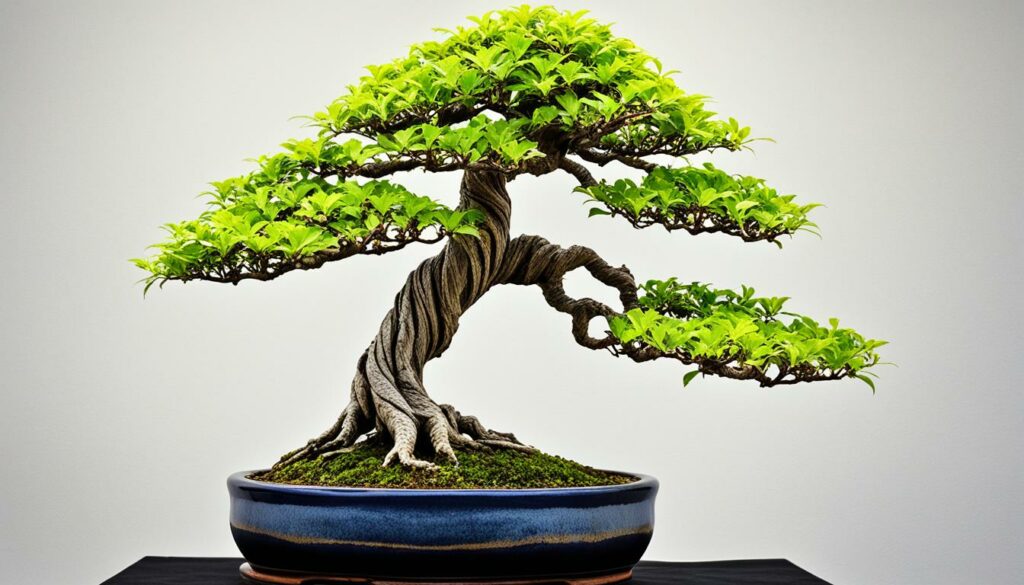
“The Celtis bonsai’s distinctive bark and versatile nature make it a great addition to any garden or indoor space.”
Cultivating Celtis Bonsai
Celtis bonsai are hardy and low maintenance, making them an ideal choice for beginners and experienced bonsai enthusiasts alike. However, to maintain their health and beauty, they do require proper care and attention. Here are some valuable insights into cultivating Celtis bonsai.
Selecting the Right Specimen
When selecting your Celtis bonsai specimen, look for a tree with a sturdy trunk and good nebari (surface roots). The tree should also have a straight or slightly curved trunk and a balanced branch structure. Be sure to inspect the foliage and roots for any signs of pests or diseases. A healthy tree will have green leaves, no discoloration, and well-developed roots.
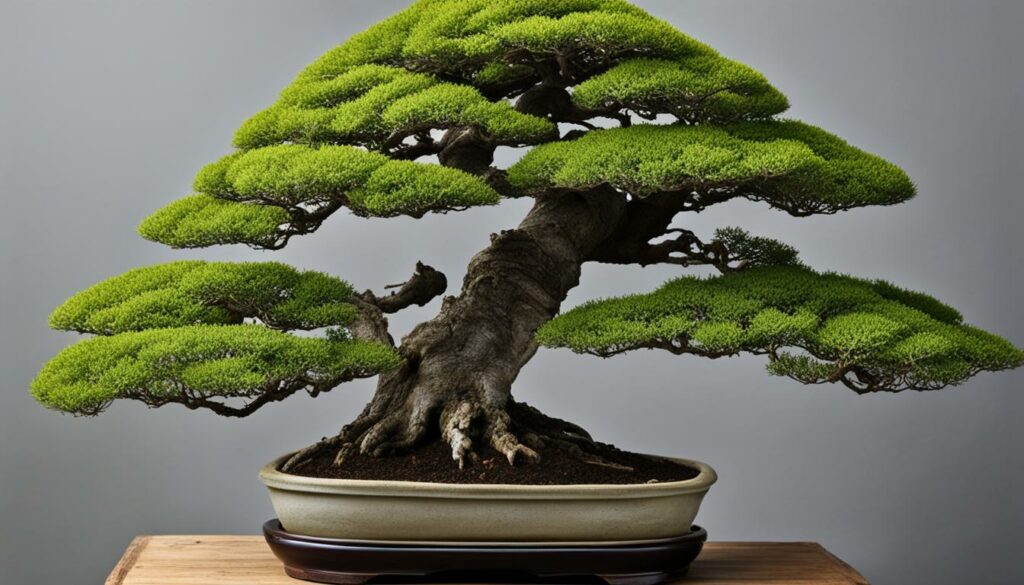
Understanding Specific Care Requirements
Celtis bonsai are deciduous trees and require a period of dormancy during the winter months. During this time, it is essential to keep the tree in a cool, dry place and reduce watering. Throughout the growing season, Celtis bonsai require regular watering, fertilization, and pruning to maintain their shape and health. They also prefer a well-draining soil mix and partial to full sun exposure.
Creating the Optimal Environment
To create the optimal environment for your Celtis bonsai, it’s essential to understand its specific care requirements. A well-lit location with good airflow and a consistent temperature is ideal. During the winter months, the tree will require protection from frost and freezing temperatures. You can use a frost cover or move the tree to an indoor location to protect it from the elements.
Final Thoughts
Cultivating Celtis bonsai requires care and attention, but it is a rewarding experience. With proper care, your Celtis bonsai will thrive and provide you with years of beauty and tranquility. Take the time to select the right specimen, understand its specific care requirements, and create the optimal environment, and your Celtis bonsai will reward you with its unique beauty.
Styling and Pruning Tips for Celtis Bonsai
Styling and pruning are critical aspects of bonsai cultivation and require a combination of artistry and horticultural knowledge. The Celtis bonsai, with its distinctive features, presents several opportunities to create unique and aesthetically pleasing designs.
One key aspect of styling Celtis bonsai is to identify its natural growth pattern and work with it, rather than against it. Using wire, you can guide the branches in the desired direction, while ensuring that they remain healthy and free from damage.
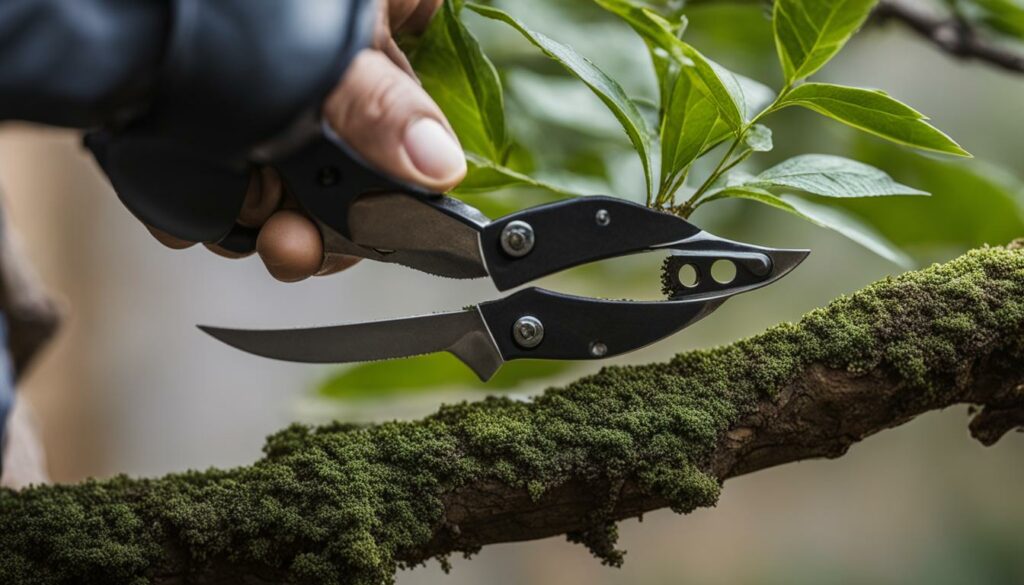
Pruning is another essential technique in maintaining the health and beauty of your Celtis bonsai. Regular pruning encourages new growth and prevents the tree from becoming too dense. One useful tip is to prune in stages, rather than removing too much at once, as this can cause stress to the tree.
To prune your Celtis bonsai, use sharp pruning shears or scissors to remove unwanted branches, leaves, and buds. When pruning, aim to create a balanced shape and maintain appropriate spacing between branches.
Additional Pruning Tips for Celtis Bonsai
- Prune in the early spring or late fall, as this is when the tree is most dormant and can withstand the shock of pruning.
- Avoid pruning during the summer, as this can cause trauma to the tree and lead to dehydration.
- Regularly check for dead or diseased branches, as these need to be removed immediately to prevent further damage.
- When pruning, ensure that the cuts are clean and close to the trunk or parent branch to facilitate healing.
Tip: It’s important to remember that pruning is not a one-time task, but an ongoing process that requires patience and attention to detail. With time and practice, you can master the art of pruning Celtis bonsai and create stunning designs that showcase its beauty and resilience.
Common Challenges and Troubleshooting for Celtis Bonsai
While Celtis bonsai is a hardy species, it is not immune to common challenges that may arise when caring for any type of bonsai tree. Proper knowledge and attention can prevent, identify, and address potential issues for the optimal health of your Hackberry bonsai.
Pests
The most common pests that can affect Celtis bonsai are aphids, spider mites, and scale insects. If left unchecked, these pests can weaken the tree and cause significant damage. Regular inspection of your bonsai tree can help detect issues early, allowing for timely intervention and treatment. Treatments such as neem oil or insecticidal soap can help to control and eliminate infestations.
Diseases
Celtis bonsai is generally a hardy species, but it can still develop diseases such as root rot and powdery mildew. These diseases can spread quickly and cause damage to the tree, so it is important to act quickly when signs of infection are observed. Careful watering practices and using a well-draining soil mix can help prevent root rot. Adjusting the humidity level around the tree can also help control powdery mildew, and there are several fungicides available to treat the disease.
Leaf Scorch
Leaf scorch occurs when the Celtis bonsai tree receives too much direct sunlight or is not properly hydrated. Symptoms of leaf scorch can include brown and curled leaves. To remedy this issue, move the bonsai tree to a location with indirect sunlight or shade, and adjust the watering routine to optimize moisture levels.
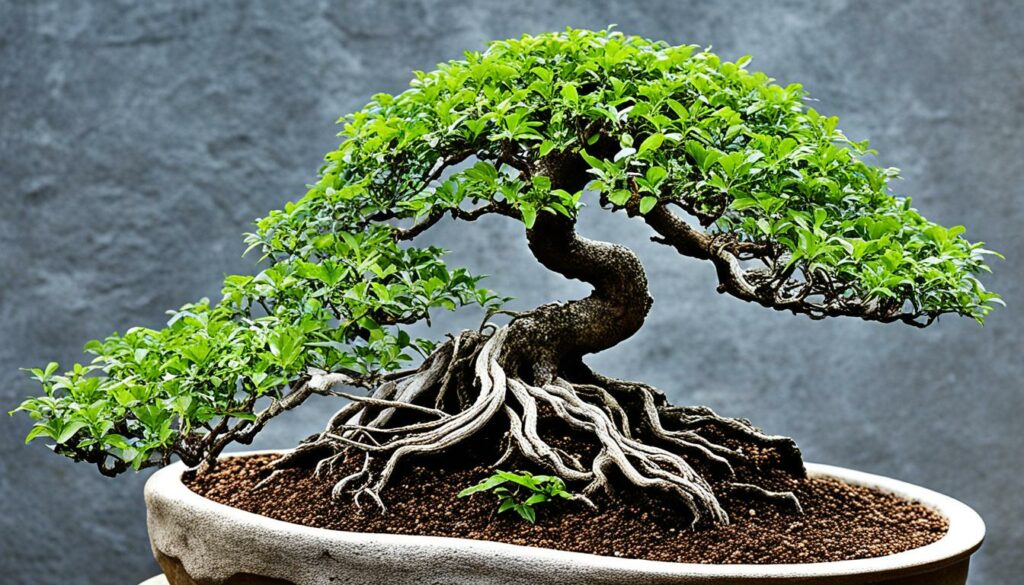
Remember that prevention is key to keeping your Celtis bonsai healthy and thriving. Regular maintenance, proper watering, adequate sunlight, and providing optimal growing conditions can help prevent many common challenges that bonsai enthusiasts may face.
Conclusion
Now that you’ve learned about the resilient and unique Bonsai Tree Species Celtis, also known as Hackberry bonsai, you can appreciate its low-maintenance nature and distinctive features that make it a popular choice among bonsai enthusiasts. Whether you are a beginner or an experienced bonsai artist, this deciduous bonsai species is easy to cultivate and takes minimal effort to maintain.
With proper care and attention, Celtis bonsai can thrive and bring beauty and tranquility to your indoor or outdoor space. Remember to select the right specimen, create an optimal environment, and use the right techniques for styling and pruning. And if you encounter any common challenges and troubleshooting, such as pest infestations or diseases, you can refer back to this guide for practical solutions and guidance.
So why not explore the world of Celtis bonsai and embark on a rewarding journey of bonsai cultivation? With its unique beauty and resilience, this deciduous bonsai species is sure to bring joy and serenity to your garden or indoor space.
FAQ
What is Celtis bonsai?
Celtis bonsai refers to the practice of cultivating and styling the Celtis species as a bonsai tree. Celtis, also known as Hackberry, is a deciduous bonsai species that combines beauty with low maintenance, making it a popular choice among bonsai enthusiasts.
What are the characteristics of Celtis bonsai?
Celtis bonsai is a deciduous tree species that displays beautiful serrated leaves, distinctive bark, and a graceful branching pattern. It is known for its resilience and adaptability, making it suitable for beginners and experienced bonsai artists alike.
How do I cultivate Celtis bonsai?
To cultivate Celtis bonsai, start by selecting a healthy specimen from a reputable nursery or collecting one from nature. Provide it with the right growing conditions, including well-draining soil, adequate sunlight, and regular watering. Additionally, ensure that you protect it from extreme temperatures and pests.
What pruning techniques should I use for Celtis bonsai?
When it comes to pruning Celtis bonsai, utilize techniques such as pruning branches to shape its overall form, pinching off new growth to encourage ramification, and removing excessive foliage to maintain balance and promote airflow. Regular pruning sessions will help maintain the desired shape and size of your bonsai tree.
What are some common challenges when caring for Celtis bonsai?
Common challenges when caring for Celtis bonsai include pest infestations, such as aphids or spider mites, and diseases like powdery mildew or root rot. Additionally, ensuring proper watering and avoiding over-fertilization is crucial for the health of your Celtis bonsai. Regular monitoring and timely intervention can help overcome these challenges.
